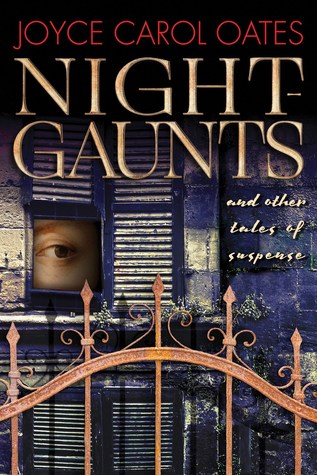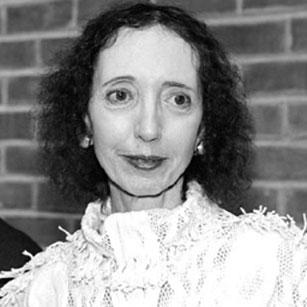Copyright 2020 by Gary L. Pullman
Charles Addams
bases most of his cartoons on a family of monsters that not only look human,
but also often act like ordinary, typical people. The humor of his work
derives, in large part, from his depiction of ordinary human behavior
as being, in some way, eccentric, grotesque, or outrageous. Often, however,
there is an additional element that makes a particular cartoon in his
oeuvre unique.
Sometimes,
only a thin line separates fantasy from reality. For example, despite
steady scientific progress and technological innovations such as
space satellites, computers, and the Internet, many people, even
today, embrace an essentially medieval worldview. The possibility, in
fiction, if nowhere else, of both supernatural and natural states of
existence allows the opportunity for what Tzvetan Todorov calls the
“fantastic,” the “marvelous,” and the “uncanny.”
According
to Todorov, the fantastic exists only if seemingly inexplicable
phenomena remain inexplicable—that is, if they cannot be resolved
as being either marvelous or uncanny. A phenomenon is marvelous
if it defies rational and scientific explanation; it is uncanny if, although strange, it can be explained by
either reason or science. For example, some contend that Henry
James's novella The Turn of the Screw is fantastic, while H.
G. Wells's short story is uncanny and Stephen King's short story
“1408” is marvelous.
Whether
Addams was aware of Todorov's paradigm or not, his drawing of stone
gargoyles atop a balcony's wall and the shock of a woman who, gazing
upward while her companions photograph the carved monsters, sees the
shadow of a flying gargoyle on the wall above, fits perfectly into
Todorov's scheme. Into the world of the ordinary, the
marvelous appears, for the statue cannot be explained as one of the
gargoyles on the wall. Its shape does not match any of those of the
statues, none of the statues is detached from the wall, and the
shadow is so situated that no unseen statue among the others could
cast it. Therefore, the existence of the statues cannot itself
explain the presence of the shadow. In Todorov's terms, the cartoon
seems implies a marvelous resolution of the apparently fantastic.
Another
of Addams's cartoons reflects the criticism of the homogenized
sameness of some suburban housing tracts that Malvina Reynolds
popular song “Little Boxes” also satirizes:
Little
boxes on the hillside,
Little boxes made of ticky tacky,
Little boxes on the hillside,
Little boxes all the same.
There's a green one and a pink one
And a blue one and a yellow one,
And they're all made out of ticky tacky
And they all look just the same.
Little boxes made of ticky tacky,
Little boxes on the hillside,
Little boxes all the same.
There's a green one and a pink one
And a blue one and a yellow one,
And they're all made out of ticky tacky
And they all look just the same.
According
to Charles
H. Smith and Nancy Schimmel, Pete Seeger Reynolds said,
“as she drove through Daly City, . . . Bud, take the wheel. I feel
a song coming on.”
However,
Addams's cartoon suggests more. The houses, indeed, “look just the
same” as one another, but the residents differ considerably—and
strangely. Each is bizarre but individual; each is “different” in
his or her own way, yet each is regarded as normal by both him- or
herself and by his or her spouse and child. Each also appears content and
confident and seems to have positive self-esteem.
The first figure, at the left of the drawing, initially catches
the viewer's attention, which is not surprising, since he is the
largest and we are taught, in the United States, among other nations,
to read from left to right. Once we notice his difference—or
differences
(he has three eyes, two noses, and two mouths—we may turn our gaze
to the others who, like him, seem to be off to work, as their wives
and children (one each to a couple), standing at their respective
doorsteps, bid them farewell.
The
second figure is portly. Doffing his hat, as the first figure does, he
turns to face his family. His wife smiles and waves; his son waves.
The gentleman wears a sports jacket, tie, and slacks, but his feet
are bare, revealing sharp, pointed toes that match those of his
sharp, pointed fingers.
The
third figure is tiny, but game; undaunted by the rolled newspaper
under his arm, which is half his own size, he looks over his
shoulder, as he waves goodbye to his normal-size wife and son, who
wave back.
Next,
an obese man performs the same action as his neighbors, waving at his
family as he departs for his day at work.
The
next figure is a human octopus, with eight arms and no legs. As he
shuffles down his walk, he doffs his hat to his wife and child, his
wife returning his wave.
The
final figure shown in the cartoon is tall and extremely thin, and he
doesn't look back at his wife and child as he makes his way out of
their front yard, but he has doffed his hat.
Although
all the houses are identical, down to the tapered conical shrubs
flanking their front doors, as are all the wives and children, the
male residents differ a good deal from one another. Their wives and
children seem to be exhausted by their roles; they are not individual
persons but, each and all, The Wife and The Child. The horror of the
cartoon comes from the sameness of the domestic lives the women and
children—and, yes, the men—live. Despite the fact that the male
characters are distinguished by their appearance, they live much the
same lives as their wives, who look identical to one another.
The
way of life, in identical houses on identical lots, and the identical
papers carried by the men, who, despite their apparent individuality,
live in the same type of houses, dress in a similar costume of coat,
tie, slacks, and (except in the case of the figure with the sharp,
pointed feet and the octopus man) shoes are what makes the characters
in the cartoon as much the same as their houses and their families. A
strict conformity to standard mores and social expectations are the
horrors that have made everyone the same, even when significant
differences exist, at least superficially.
Repetition
is the technique that reveals the theme of Addams's cartoon. In and
of itself, some find repetition eerie, especially when its reiterations
seem unending. When such repetition is combined with a hard-and-fast
conformity to rigid social conventions, its demonstration of the
effects of such dehumanization is horrific, indeed, despite the
humorous situation Addams's cartoon depicts.
A
third Addams cartoon exhibits a bit of ethnocentricity, the valuing
of a another culture by the standards of one's own culture.
As
a party of four black men wearing loincloths sit or stand about a
huge cauldron at the edge of a bamboo forest in the background, one of
them stirring its contents with a stick, a woman of their tribe,
naked but for a string of beads around her neck, bends forward at the
waist to offer a white man in khakis a bowl of food, presumably from
the cauldron. A shelf below the thatched roof of a nearby hut
displays four human skulls, seeming to suggest that the tribe are
cannibals. Her guest grimaces in disgust, refusing to accept the
bowl, which prompts the woman to say, as a parent might remonstrate
with a stubborn and unreasonable child, “How do you know you don't
like it if you won't even try it?”
The
cartoon's readers may also find the idea of eating human flesh to be
repulsive for the same reason that the disgusted man to whom the bowl
is offered does. He need not sample the food to find it
objectionable; he accepts his own culture's taboo against cannibalism
as justified. In short, he finds human flesh, as food, obnoxious on
principle. There is no need to “try” the dish to determine
whether he would enjoy it.
From
the native woman's perspective, her guest is being childish. She
finds his position to be unreasonable. Experience, she suggests,
should be the test of approval or disapproval. From her standpoint,
he should “try” the meal; from his, eating human flesh is simply
unthinkable.
By
juxtaposing the standards of conduct dictated by two societies that
differ sharply from one another, Addams suggests that some horrors
are horrible only because taboos make them so. If one were a member
of the woman's culture, he or she would find her guest's refusal to
even “try” the dish she offers him—an affront to her people's
hospitality—as rude as it is incomprehensible. If a member of his
culture, one would find her offer of such a meal unenlightened at
best and as horrific in any case.
As
seen from the perspective of the man in khakis, the humor of the
cartoon depends upon the reader's acceptance of the Western taboo
against cannibalism, which makes the woman's chiding of him, as if he
were a child, humorous because of the patent incongruity of it.
In
a second reading of the cartoon, its humor depends upon seeing the
guest, a grown man, acting in a petulant, childish, rude, and
thoroughly unreasonable manner. If there is nothing intrinsically
wrong with eating human flesh, he is the stubborn,
unreasonable child she thinks he is.
Finally,
the cartoon can also be seen as a satirical comment on the nature of
morality itself, if morality is viewed as relative and ethnocentric, rather than as absolute and universal.

























